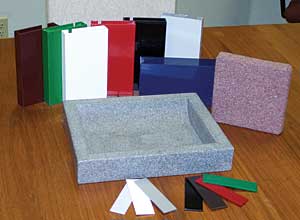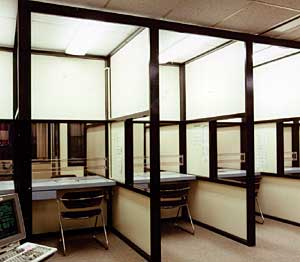Designing Bullet Resistant Protection Panel Systems: Capture More than the Imagination
Ultimately, UL-752 product compliance measures are in standardized manufacturing. With rated materials, architects are backed by the fact that the materials were tested and rated independently. Rating combinations of materials found in manufactured capture frames for example, are not set by the Underwriter's Laboratory.
In summary, when tested singly UL can give materials performance ratings. Initially specifying the addition of bullet resistant armoring may seem simple and straightforward design approach, but there are issues when ballistic resistance is made to appear no different from other building materials. In actuality, the bullet resistant field is more complex. This is why responsible companies use the security industry recognized Underwriters Laboratories Standard 752 (UL-752) as their guide; understand the difference between listed materials and materials that meet general industry standards. Architectural armorers cannot guarantee stopping all types of bullets with one system, they provide provisional guarantees to make every system as proof as possible to the threat level specified.
 |
| Choice of Colors for Frame Materials Photo credit: Bullet Guard |
Some manufacturers supply ratings with assemblies that while not all of the components in a ballistic enclosure are required to be UL listed, the major ones, such as the transparent and opaque materials that make up the bulk of the armoring assembly, should carry that label. As an example, manufacturer's panel attachments may not be UL-752, but they are backed by UL-752 materials.
Design Criteria for Protection Materials
Planning a space for potential attack can be challenge enough, the ability to achieve seamless design for ballistics shielding and achieve an aesthetic balance is another challenge. Manufactures are providing rated backings to panels coated in a variety of designer colors and textures. Manufacturers supply panels, enhancing design intent in a high-end storefronts or the lobby of company headquarters building. Softening the look while hardening the target includes use of powder coat multi-color frame finishes, fabric coverings, wood trims, brass, faux marble, etc.
Bullet Resisting Acrylics are specified with or without the added costs of hard coatings and are applied to one side or both sides of a panel. Combining bullet-resisting polycarbonate/acrylic combinations with hard coat finish gives strength and durability and opens the plan views aesthetically. Designs in lobbies include Level II Polycarbonate with hard coat finish, non-ricochet, and Level III Polycarbonate with hard coat finish, non-ricochet depending on the design threat Level depending upon the location.
 |
| Modular Interview Booths Photo credit: Bullet Guard |
Intrusion / Detention Specifying
Specify intrusion / detention material tested and certified by ASTM. Follow Section 1233-93 under ASTM and in H.P. White is HPW-TP-0500.00 for this specification. In either laboratory, the tests are not done like those tests performed for the bullet resistant material. The tests are done in steps that lead to it being rated by Class.
There are 5 Classes in this type of specification. It is important to note, all the ratings are for forced entry. The means used for determining various classes range from striking tools (hammers, sludge, axes) to thermal stress (extinguisher, CO) and chemical deterioration (gasoline, methylene chloride). The more steps it passes, the higher the classification.









